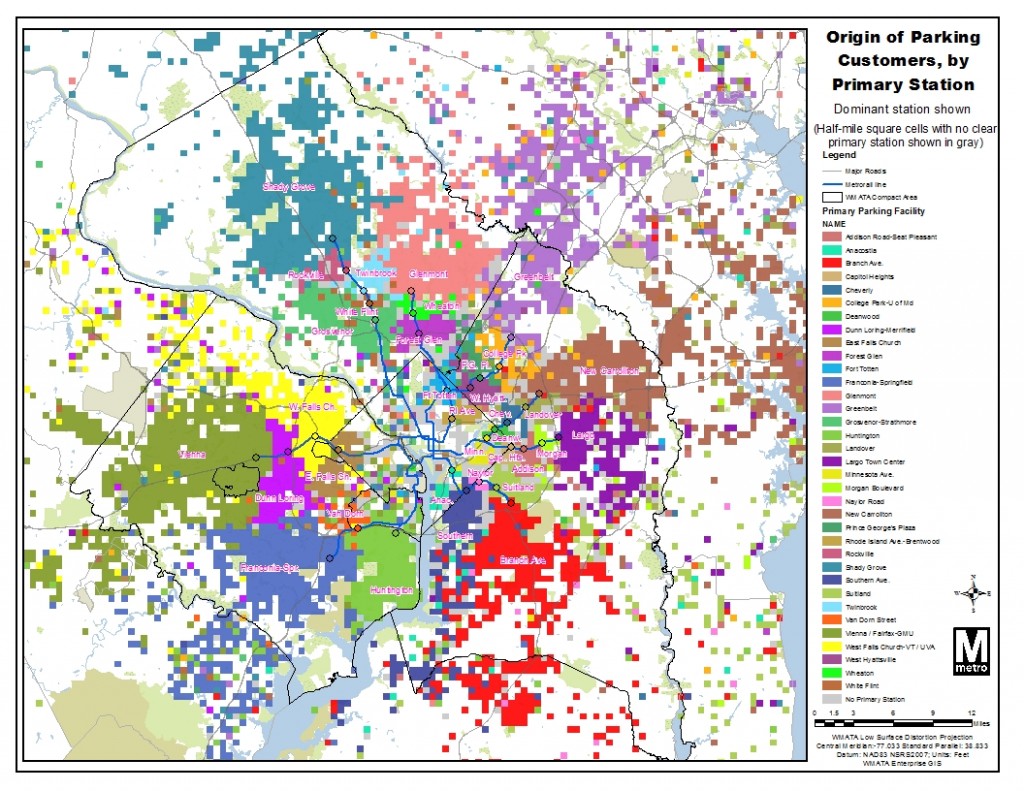Metro’s Two Flavors of Parking
A handful of end-of-line stations’ parking facilities are doing the lion’s share of extending the reach of Metro across the region, while parking at most other stations primarily serves nearby residents.
Parking at rail stations is traditionally thought to extend the geographic reach of transit in the region, by giving longer-distance commuters a way to access a rail station. Based on an analysis of Metro parking customers’ origins, a handful of large end-of-line Metro parking facilities perform this function, but most Metrorail parking facilities do not. Nine Metrorail stations are capturing 70 percent of all customers who drive from more than three miles to park-and-ride, while the 26 other Metro parking facilities primarily serve the surrounding neighborhoods.
Our map of parking customers’ origins showed how far Metro’s reach extends across the region. Now, this map shows the dominant station among Park & Ride customers, by half square-mile, for a typical weekday:
Areas where there is no clear primary station are shaded gray: for example, the dividing line between Southern Ave. and Branch Ave. stations. The dominant station is shown, regardless of how many Park & Ride customers there are for a square. There is some noise in this data, but two “flavors” of parking emerge: Read more…



Recent Comments